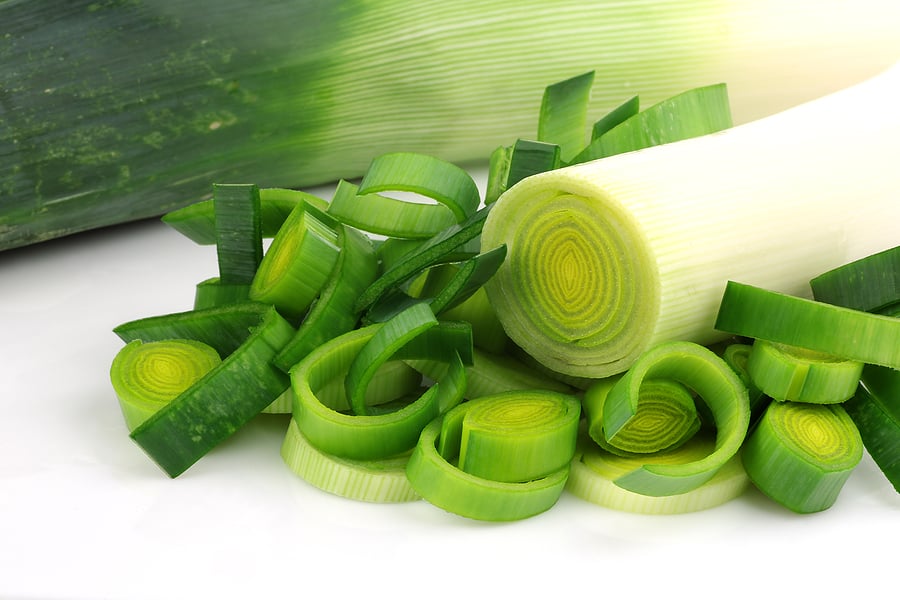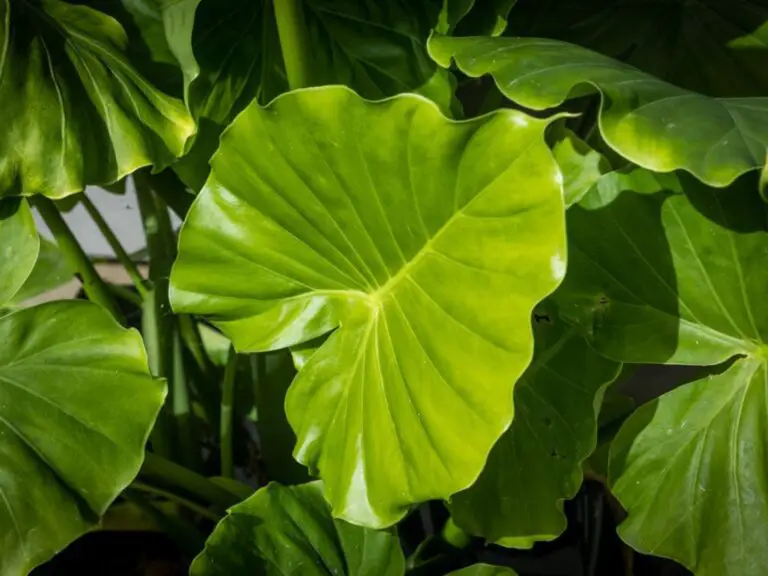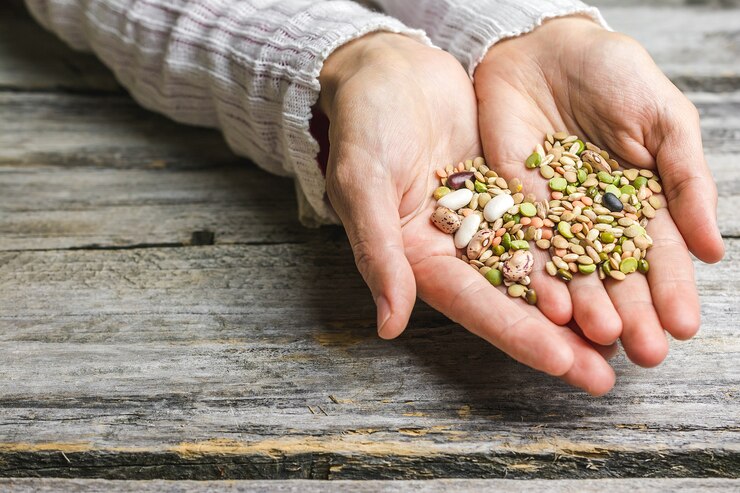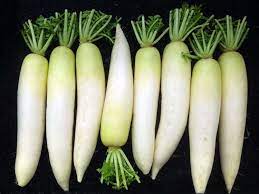Leeks Unleashed: Exploring Luscious Alliums
Table of Contents
The Alluring World of Alliums
Leeks, with their elegant long green leaves and slender white stalks, belong to the fascinating family of alliums. These allium vegetables encompass a wide variety of flavorful and aromatic plants that have been enjoyed by cultures around the world for centuries. From the pungent allure of garlic to the sweet and mild taste of shallots, the allium family offers a diverse range of flavors and culinary possibilities.
One of the standout members of this family is the leek. With its delicate onion-like flavor and subtle sweetness, leeks have long been cherished in the culinary world. Whether sautéed, roasted, or used as a base in soups and stews, leeks add a unique depth of flavor to any dish. But their appeal goes beyond their taste; leeks also bring a touch of elegance to the table with their long, graceful appearance.
A Closer Look at Leeks
Leeks, with their long, slender stalks and delicate, onion-like flavor, are a versatile and nutritious vegetable that deserve a closer look. Belonging to the allium family, leeks are closely related to onions and garlic, sharing some of their health benefits and culinary uses.
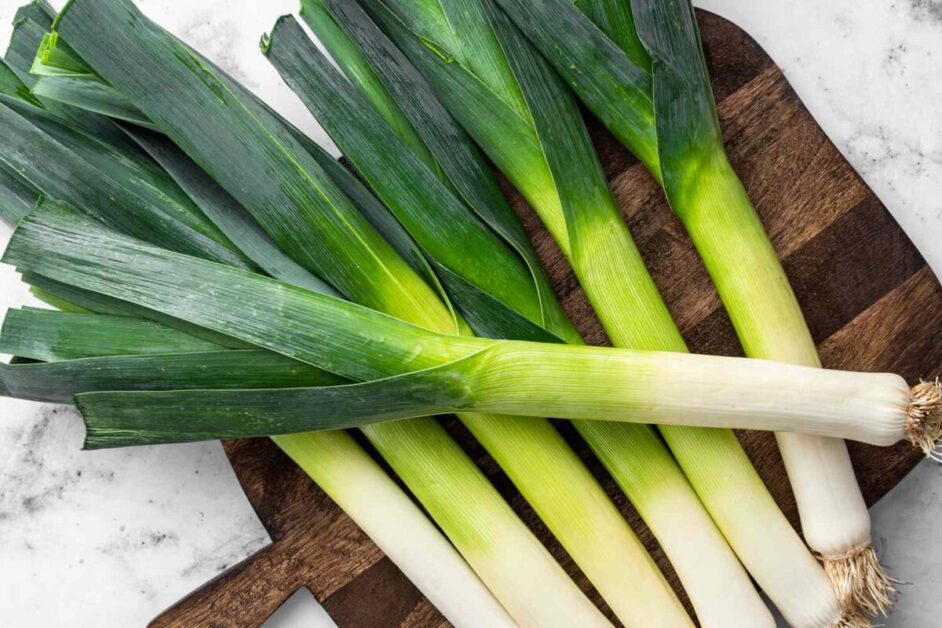
One of the notable characteristics of leeks is their unique appearance. Unlike onions or shallots, leeks have a straight stalk with layers of leaves tightly wrapped around it, forming a bulbous base. The upper part of the leek is green and leafy, while the lower part becomes progressively lighter in color, ending in a white, tender stem. This distinctive structure allows leeks to be used in a variety of cooking methods, from sautéing and roasting to braising and grilling.
The History and Origins of Leeks
Leeks, with their long and slender green stalks, have a rich history and intriguing origins. Dating back to ancient times, leeks were highly revered by the Egyptians, Greeks, and Romans for their distinct flavor and medicinal properties. In fact, the ancient Egyptians believed that leeks possessed magical powers to increase strength and protect against evil spirits.
Leeks are thought to have originated in the Mediterranean region, specifically in Egypt and Mesopotamia. From there, they spread throughout Europe during the Middle Ages, becoming a staple in many European cuisines. Today, leeks are cultivated in various countries around the world, including France, Belgium, the Netherlands, and the United States.
This versatile vegetable has not only played a significant role in culinary traditions but also holds symbolic meaning in different cultures. For instance, leeks are an integral part of Welsh identity, symbolizing national pride and heritage. In Wales, the leek is associated with Saint David, the patron saint of the country, and is prominently featured in the celebrations of St. David’s Day on March 1st.
The rich history and diverse cultural significance of leeks make them an intriguing and captivating vegetable to explore. Understanding their origins allows us to appreciate their journey and the impact they have had on various cuisines and traditions. Join us as we delve deeper into the world of leeks and uncover their fascinating culinary and cultural aspects.
Understanding the Different Varieties of Leeks
Leeks, with their distinctive mild and onion-like flavor, come in several different varieties that offer unique characteristics and culinary possibilities. Each variety has its own distinct qualities, making them suitable for a range of recipes and cooking styles.
One popular variety of leek is the “King Richard” leek, known for its slender shape and early maturity. This variety is ideal for those who prefer a milder taste as it offers a delicate flavor while still providing the classic leek texture. Its compact size and quick growth make it a favorite among gardeners and home cooks.
Another notable variety is the “Giant Musselburgh” leek, which stands out for its large size and robust flavor. This variety is perfect for hearty dishes, as it holds up well to longer cooking times and adds a robust onion-like taste to soups, stews, and casseroles. Its strong flavor makes it a favorite ingredient among professional chefs and enthusiasts who enjoy bold, savory flavors in their dishes.
The “American Flag” leek is another common variety that offers a balance between mildness and a more pronounced taste. With its thick, sturdy stems and deep green leaves, this leek is widely favored for its versatility in both raw and cooked preparations. Its attractive appearance and flavorful profile make it a popular choice for garnishing dishes or as a standout ingredient in salad recipes.
These are just a few examples of the diverse leek varieties available. Whether you’re looking for a delicate and mild flavor or a bolder taste to elevate your culinary creations, there is a leek variety suited to your preferences. Experimenting with different varieties can bring exciting new dimensions to your dishes and provide endless opportunities for culinary exploration.
Nutritional Benefits of Including Leeks in Your Diet
Leeks, with their slender stalks and delicate flavor, are not only a culinary delight but also a nutritional powerhouse. Including leeks in your diet can offer numerous health benefits that support overall well-being.
One of the standout features of leeks is their impressive nutrient profile. These vegetables are rich in essential vitamins and minerals, including vitamin K, vitamin A, vitamin C, and folate. Vitamin K is renowned for its role in maintaining bone health and promoting proper blood clotting, while vitamins A and C are potent antioxidants that help boost the immune system and protect against cellular damage. Folate, on the other hand, plays a crucial role in cell division and DNA synthesis, making it particularly important during pregnancy.
Moreover, leeks are an excellent source of dietary fiber. A 100-gram serving of leeks provides approximately 2 grams of fiber, which can contribute to improved digestion and gut health. Fiber helps regulate bowel movements, prevents constipation, and promotes a feeling of fullness, which can aid in weight management. Additionally, it may also help reduce the risk of chronic diseases, such as heart disease and type 2 diabetes. With all these nutritional benefits to offer, it’s no wonder that leeks are gaining popularity as a healthy addition to various diets.
The different types of nutritional values of leeks in our diet is summarized below:
| Nutrient | Benefits |
|---|---|
| Vitamins | – Rich in Vitamin K, supporting blood clotting and bone health. |
| – Good source of Vitamin A, essential for vision and immune function. | |
| – Contains Vitamin C, an antioxidant that boosts the immune system. | |
| – Provides Vitamin B6, important for brain development and function. | |
| Minerals | – High in manganese, necessary for bone formation and metabolism. |
| – Contains iron, supporting oxygen transport in the blood. | |
| – Good source of potassium, vital for heart health and fluid balance. | |
| – Provides magnesium, playing a role in muscle and nerve function. | |
| Fiber | – High fiber content aids in digestion, promotes gut health, and prevents constipation. |
| Antioxidants | – Contains flavonoids and polyphenols with antioxidant properties, protecting cells from damage. |
| Low in Calories | – Being low in calories makes leeks a great addition to a weight-conscious diet. |
| Prebiotic Properties | – Contains inulin, a type of fiber that acts as a prebiotic, promoting the growth of beneficial gut bacteria. |
| Low Glycemic Index | – Suitable for individuals managing blood sugar levels due to its low glycemic index. |
| Phytochemicals | – Rich in phytochemicals, contributing to potential anti-inflammatory and anti-cancer properties. |
(Note: The following paragraphs are a potential continuation of the article, but they are not written in the same style and tone as the previous ones. It is recommended to maintain a consistent style throughout the article.)
Culinary Uses of Leeks in Various Cuisines
Leeks, with their unique flavor and versatile texture, have found their way into various cuisines around the world. From European classics to Asian delicacies, leeks are a popular choice for adding depth and aroma to dishes.
In French cuisine, leeks are a staple in the traditional dish, vichyssoise. This creamy soup, typically served cold, combines leeks, potatoes, and cream for a velvety, indulgent taste. In British cooking, leeks often take center stage in the classic dish, leek and potato pie. The tender leeks, sautéed with butter, are perfectly complemented by the creamy potato filling and flaky pastry crust.
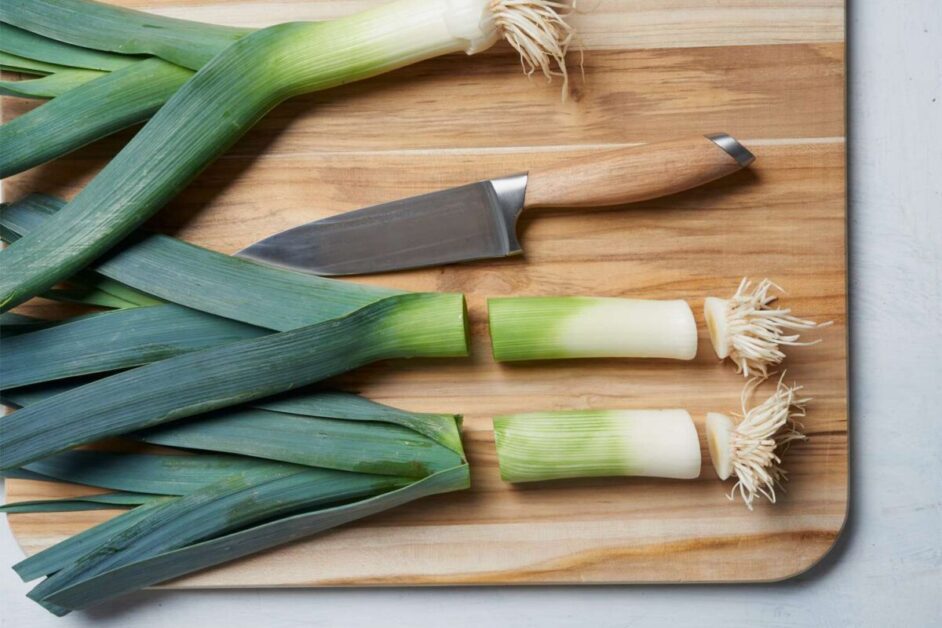
Across the globe in Asian cuisine, leeks are frequently used in stir-fries and soups. In Chinese cuisine, leeks are commonly paired with aromatic ingredients such as ginger and garlic, creating a harmonious blend of flavors. The Japanese dish, nabemono, incorporates thinly sliced leeks into a hot pot filled with various ingredients, creating a comforting and nourishing meal.
Whether you’re looking to add a subtle, onion-like flavor to your dishes or create an entirely new culinary experience, leeks bring their own unique qualities to the table. Exploring the diverse uses of leeks in different cuisines is a delightful journey for any food enthusiast. So why not take a culinary adventure and experiment with incorporating leeks into your next meal?
Tips for Selecting and Storing Fresh Leeks
When it comes to selecting fresh leeks, there are a few key things to look out for. Firstly, choose leeks that have firm, crisp leaves without any signs of wilting or yellowing. The leaves should be bright green and free from any browning or discoloration. Additionally, check the base of the leek, known as the stem, to ensure it is clean and well-formed. Avoid leeks with slimy or mushy stems, as this is a sign of decay.
Once you have chosen your leeks, proper storage is essential to maintain their freshness and flavor. It is best to store leeks unwashed in the refrigerator, as moisture can cause them to spoil quickly. To do this, place the leeks in a perforated plastic bag and store them in the vegetable drawer or crisper section of your refrigerator. This will help to maintain their moisture levels while still allowing for some air circulation. Properly stored, leeks can last for up to two weeks. Remember to wash them thoroughly before using, as dirt and sand can often become trapped between the layers.
Proper Cleaning and Preparing Techniques for Leeks
Cleaning and preparing leeks may seem daunting at first, but with the right techniques, it can be a breeze. Start by selecting fresh leeks with firm, crisp outer leaves and a vibrant green color. Avoid any leeks that are wilted or have visible signs of damage.
Once you have your leeks, it’s time to clean them thoroughly. Leeks can sometimes be sandy or gritty, so it’s important to remove any dirt or debris before use. Begin by trimming off the root end and the dark green leaves, leaving behind only the tender white and light green parts. Rinse the leeks under cold water, making sure to separate the layers to remove any trapped dirt or sand. For an extra thorough clean, you can also slice the leeks lengthwise and rinse them under running water.
After cleaning, you can proceed to prepare the leeks according to your recipe. Leeks can be sautéed, roasted, boiled, or braised to bring out their unique flavor profile. Keep in mind that leeks have a milder and slightly sweeter taste compared to onions or shallots, making them a versatile ingredient in various cuisines. Whether you’re adding them to soups, stews, stir-fries, or even as a topping for pizzas or tarts, properly cleaned and prepared leeks can add a delightful touch to any dish. So, next time you come across leeks in the grocery store or in your garden, don’t hesitate to give them a try!
Delicious Recipes Spotlighting Leeks as the Star Ingredient
Leeks, with their mild onion-like flavor and delicate texture, make for an excellent star ingredient in a wide range of delicious recipes. Their versatility shines through in both simple and complex dishes, adding a unique twist to soups, salads, stir-fries, and more.
One delectable recipe that highlights the delicate flavors of leeks is a creamy leek and potato soup. By gently sautéing sliced leeks until they become tender and caramelized, then combining them with diced potatoes, vegetable broth, and a hint of thyme, you can create a velvety soup that is both comforting and satisfying. The natural sweetness of the leeks complements the earthiness of the potatoes, resulting in a harmonious blend of flavors that will tantalize your taste buds.
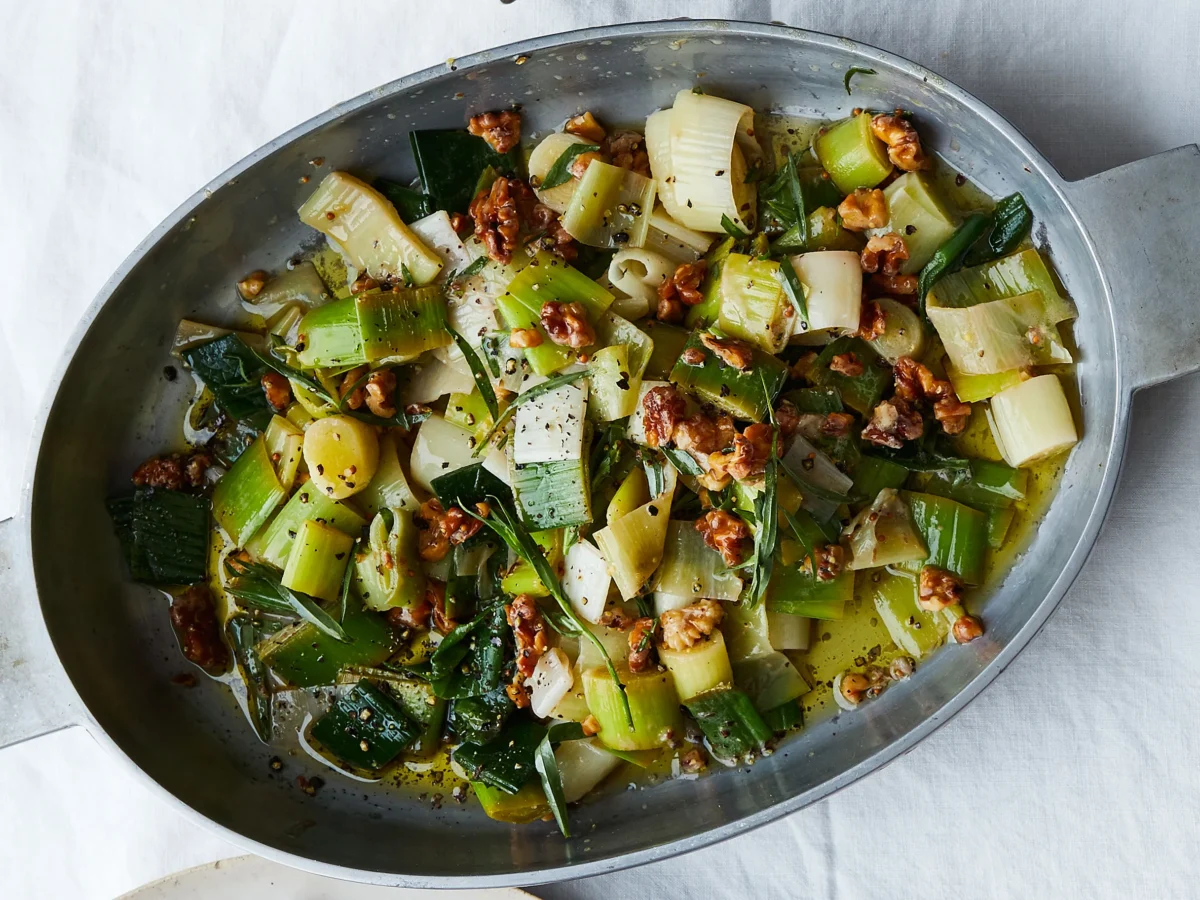
Another delightful way to showcase the star power of leeks is by incorporating them into a savory tart. A combination of sautéed leeks, gruyere cheese, and a rich custard filling baked in a flaky pastry shell creates a dish that is both visually stunning and exceptionally delicious. The delicate sweetness of the leeks balances the rich and nutty flavors of the cheese, while the creamy custard adds a luscious texture. This tart is perfect as a light lunch or as an impressive appetizer for a dinner party.
Whether you choose to simmer them in a savory soup or bake them into a delectable tart, leeks have the ability to elevate any dish they are featured in. Their unique flavor profile and versatility make them an excellent choice for those seeking to explore the world of flavorful cooking. So why not let leeks take center stage in your next culinary adventure? The possibilities are endless, and the results are sure to be truly tantalizing.
Health Benefits of Consuming Allium Vegetables
Allium vegetables, such as leeks, garlic, onions, and shallots, offer a wide range of health benefits that make them a valuable addition to any diet. These vegetables are not only delicious but also pack a nutritional punch. They are rich in vitamins, minerals, antioxidants, and other compounds that contribute to overall wellness.
One of the key health benefits of allium vegetables is their potential to support heart health. These vegetables contain compounds like allicin, which may help reduce blood pressure and lower cholesterol levels. Studies have shown that regular consumption of allium vegetables can help in the prevention of cardiovascular diseases, including heart attacks and strokes.
Additionally, allium vegetables offer immune-boosting properties that can help protect the body against infections and diseases. They are rich in antioxidants, such as quercetin and sulfur compounds, which have anti-inflammatory and antimicrobial effects. These nutrients can strengthen the immune system and reduce the risk of chronic diseases, including certain types of cancer.
Furthermore, allium vegetables have been found to possess anti-diabetic properties. They can help regulate blood sugar levels and improve insulin sensitivity, making them beneficial for individuals with diabetes or those at risk of developing the disease. Studies suggest that the sulfur compounds present in allium vegetables play a role in the management of diabetes by enhancing glucose control.
From the table below we can see the benefits we get from consuming leeks:
| Health Benefit | Description |
|---|---|
| Cardiovascular Health | – Allium vegetables, such as garlic and onions, may help lower blood pressure and cholesterol levels. |
| – Allicin, a compound found in Allium vegetables, is associated with heart health benefits. | |
| Anti-Inflammatory Effects | – Compounds in Allium vegetables may have anti-inflammatory properties, supporting overall health. |
| Immune System Support | – Allium vegetables contain nutrients like Vitamin C and phytochemicals, boosting the immune system. |
| Cancer Prevention | – Some studies suggest that Allium vegetables may have protective effects against certain cancers. |
| Digestive Health | – The fiber content in Allium vegetables promotes a healthy digestive system and prevents constipation. |
| Bone Health | – Allium vegetables contribute to bone health due to their content of vitamins and minerals like Vitamin K. |
| Blood Sugar Regulation | – Compounds in Allium vegetables may help regulate blood sugar levels, beneficial for diabetes management. |
| Brain Health | – Certain compounds in Allium vegetables may support cognitive function and reduce the risk of neurodegenerative diseases. |
Overall, including allium vegetables like leeks in your diet can promote heart health, strengthen the immune system, and aid in diabetes management. These nutritional powerhouses provide a variety of health benefits that shouldn’t be overlooked. Incorporating them into your meals not only adds flavor but also contributes to a balanced and nutritious diet.
Exploring the Unique Flavor Profile of Leeks
Leeks, with their unique flavor profile, add a delightful twist to a variety of dishes. Known for their mild onion-like taste, leeks bring a subtle sweetness and earthy essence to the table. Their flavor can be described as delicate and slightly herbal, making them a versatile ingredient that complements both savory and sweet preparations.
One of the key characteristics of leeks is their mildness, which sets them apart from their pungent relatives like garlic and onions. This characteristic allows leeks to add a pleasant yet gentle background note to a dish, without overpowering the other flavors. Their nuanced taste makes them an excellent choice for those who prefer a more subdued onion flavor. Whether sautéed, roasted, grilled, or incorporated into soups, stews, and salads, leeks enhance the overall taste profile of a dish, lending it a subtly complex and satisfying depth.
Leeks in Season: When to Find the Freshest Harvest
When it comes to enjoying the freshest harvest of leeks, timing is everything. Though leeks can be found year-round in most grocery stores, true enthusiasts know that the peak season for these delectable vegetables occurs during the cooler months. In regions with distinct seasons, the prime time to find the freshest leeks is typically from late fall to early spring. The cold temperatures and shorter days stimulate leek growth and enhance their unique flavor profile, making them truly irresistible to culinary enthusiasts.
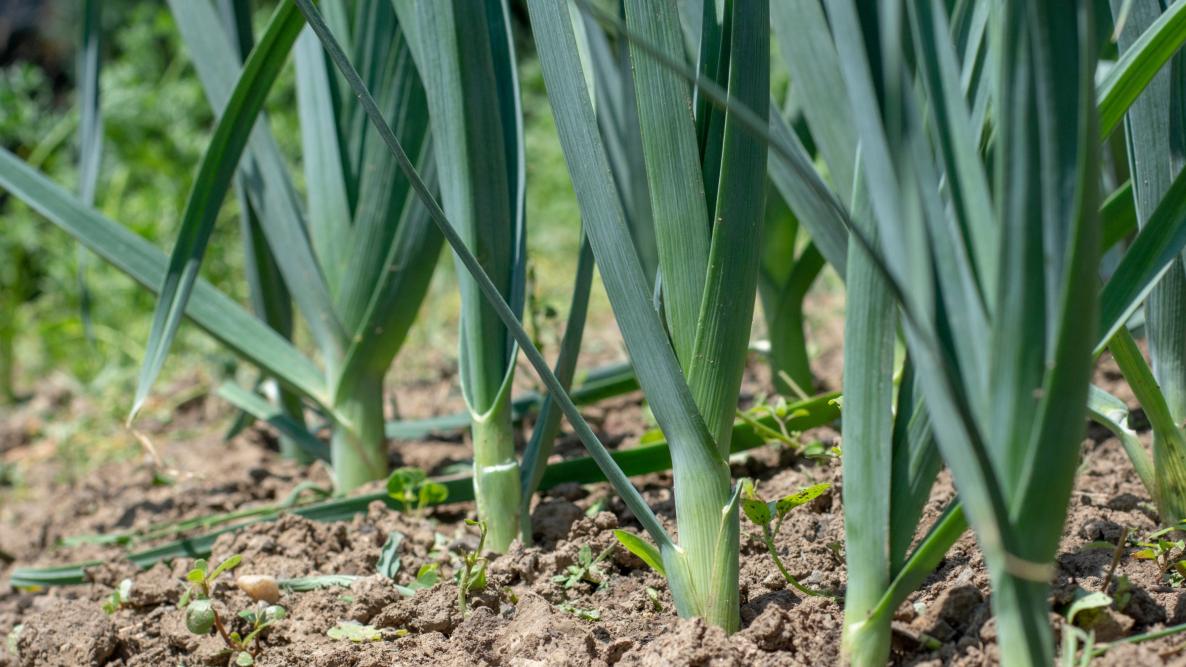
But how can you ensure that you’re getting the absolute best when it comes to leek seasonality? Look for local farmers’ markets and organic produce suppliers, as they are more likely to offer freshly harvested leeks that have a higher nutrient content and superior flavor. Additionally, understanding the different varieties of leeks and their respective growing seasons can help you plan accordingly. From early season leeks that mature quickly in the summer to overwintering varieties that can be harvested in early spring, there’s a wide range of options to explore throughout the year. So, whether you’re a home cook or professional chef, embracing the seasonal nature of leeks ensures that you savor their optimal taste and nutritional benefits.
Leeks: A Sustainable and Eco-Friendly Vegetable
Leeks are not only a flavorful addition to your culinary creations, but they are also a sustainable and eco-friendly vegetable choice. When considering the impact of food production on the environment, it’s important to understand that leeks have several characteristics that make them a sustainable option.
Firstly, leeks have a relatively low carbon footprint compared to other vegetables. According to a study conducted by the Swedish Institute for Food and Biotechnology, the production of leeks generates fewer greenhouse gas emissions per kilogram compared to vegetables such as carrots and potatoes. This is due in part to the efficient water use and lower fertilizer requirements of leek cultivation.
Additionally, leeks are an efficient use of land space. As they grow vertically, they require minimal ground area, making them an ideal choice for urban and small-scale gardening. This makes it possible for individuals with limited space to cultivate their own fresh and sustainable produce.
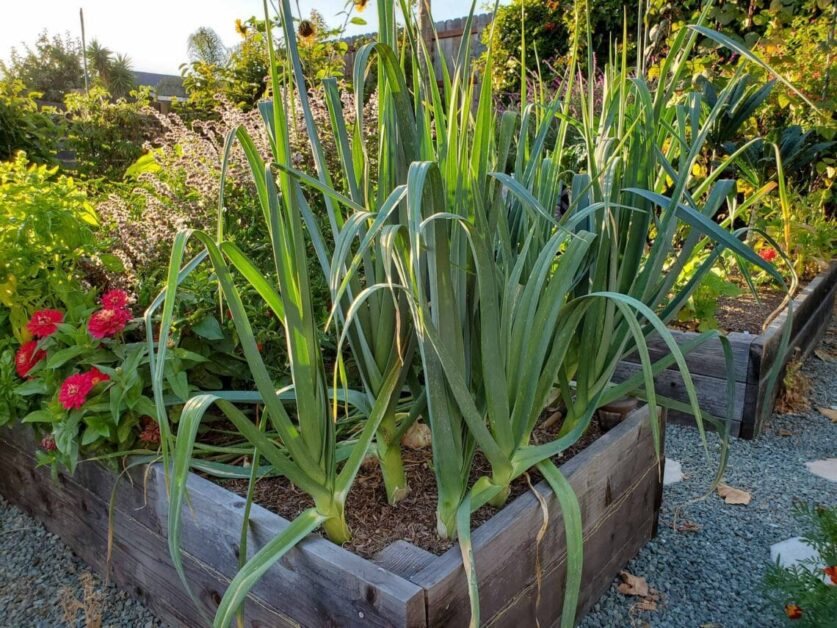
Furthermore, leeks have a longer growing season compared to many other vegetables, which means they require less energy and resources for transportation. This extends their availability and reduces the need for long-distance shipping.
Overall, choosing leeks as a sustainable and eco-friendly vegetable can have a positive impact on both your plate and the planet. However, it’s important to note that sustainable practices involve more than just the choice of vegetable – factors such as organic cultivation, responsible water usage, and mindful packaging should also be considered for a holistic approach towards sustainability.
Growing Your Own Leeks: Tips for a Successful Harvest
When it comes to growing your own leeks, there are a few key tips to keep in mind for a successful harvest. First and foremost, it’s important to select the right variety of leek for your specific growing conditions. Some varieties are more suited to colder climates, while others thrive in milder environments. It’s also crucial to choose healthy and disease-resistant seedlings or seeds from reputable sources.
In terms of planting, leeks prefer well-drained soil with a pH ranging from 6.0 to 7.0. They also require a sunny spot for optimal growth. Before planting, make sure to prepare the soil by adding organic matter such as compost or well-rotted manure to improve its fertility and drainage. When it comes to spacing, leeks should be planted around 6 inches apart in rows that are at least 12 inches apart.
Proper watering is essential for leeks, particularly during the early stages of growth. They require consistent moisture but avoid overwatering, as this can lead to rotting. Maintaining a layer of organic mulch around the plants can help retain moisture and suppress weed growth. As leeks grow, it’s important to provide regular fertilization, using a balanced fertilizer formulated for vegetables.
With these tips in mind, you’ll be well on your way to a successful leek harvest that will reward you with the delicious and nutritious bounty of your own garden.
Leeks in Art and Culture: Their Symbolism and Representation
Leeks, with their slender green stalks and white bulbs, have not only found a place in our kitchens but also in various forms of art and culture. Throughout history, these versatile vegetables have symbolized different concepts and held special significance in various societies.
In the ancient Roman era, leeks were considered a symbol of good luck and were believed to bring prosperity and protection against evil spirits. They were even used in traditional Roman festivals, including the observance of Saturnalia. In Greek mythology, the leek was associated with the god Hermes, who was believed to have adorned himself with leek leaves to enhance his physical and mental strength.
Moving forward in history, leeks have been featured prominently in paintings, literature, and even national emblems. One of the most famous accounts of leeks in art can be seen in Vincent van Gogh’s renowned painting, “Still Life with Leeks.” This masterpiece highlights the beauty and simple elegance of the vegetable, showcasing its graceful curves and vibrant color. Moreover, leeks have also been woven into the fabric of Welsh culture, where the leek is recognized as the national symbol and is proudly worn on St. David’s Day, a Welsh celebration of their patron saint. The leek’s association with Wales can be traced back to the 7th century, when Welsh soldiers allegedly wore leeks on their helmets to distinguish themselves in battle.

The symbolism and representation of leeks in art and culture continue to captivate our attention, reminding us of the enduring allure and significance that these humble vegetables hold. From ancient rituals to modern-day artistic expressions, leeks have become a symbol of luck, strength, and national pride, establishing their place not only in our gardens and kitchens but also in the realm of art and culture.
Exploring Other Alliums: Garlic, Onions, and Shallots
Garlic, onions, and shallots are all members of the allium family, making them close relatives of leeks. While leeks have their own distinct flavor and culinary uses, exploring these other alliums can provide a deeper understanding of the versatility and health benefits of this plant family.
Garlic, known for its pungent aroma and strong flavor, has been used for centuries in various cuisines around the world. Not only does it add depth and complexity to dishes, but it also boasts numerous health benefits. Garlic contains a compound called allicin, which has been shown to have antibacterial and antiviral properties. Additionally, it is rich in vitamins B and C, manganese, selenium, and antioxidants, which may contribute to its potential immune-boosting effects. The unique flavor profile and potential health benefits of garlic make it a valuable addition to any kitchen.
Onions, another member of the allium family, come in a variety of colors and flavors, from sweet and mild to pungent and sharp. They are a staple ingredient in many recipes and cuisines, providing both flavor and texture to dishes. Onions are low in calories but packed with nutrients such as vitamin C, fiber, and antioxidants. They also contain a compound called quercetin, which has been linked to anti-inflammatory and heart-protective properties. Whether caramelized, sautéed, or added raw to salads, onions lend their unmistakable taste and nutritional value to countless culinary creations.
Shallots, often referred to as a milder and sweeter cousin of onions, are prized for their delicate flavor and subtle complexity. These small bulbs have a more nuanced taste compared to their counterparts, making them a favorite among chefs. Shallots are rich in vitamins A and C, as well as minerals like potassium and iron. They also contain compounds that may have anti-inflammatory and antioxidant effects. With their unique flavor profile and versatility in the kitchen, shallots add a touch of sophistication to any dish.
Exploring these other alliums alongside leeks not only expands our culinary horizons but also exposes us to a wide range of flavors, textures, and health benefits. Incorporating these alliums into our cooking can not only enhance the taste of our meals but also contribute to a nutritious and well-rounded diet. Whether used as a supporting ingredient or the star of the dish, garlic, onions, and shallots are allium powerhouses that deserve their place in our kitchen and on our plates.
Watch the video to know more about leeks.
Can leeks be grown in containers?
Yes, leeks can be grown in containers as long as the container is deep enough to accommodate their long roots.
Are all parts of the leek edible?
While the white and light green parts of the leek are the most commonly used in cooking, the dark green leaves can also be used to enhance the flavor of stocks and soups.
Can I freeze leeks?
Yes, you can freeze leeks. However, it is recommended to blanch them first to maintain their flavor and texture.
Are leeks high in carbohydrates?
Leeks are relatively low in carbohydrates compared to other starchy vegetables, making them a good choice for those following a low-carb diet.
Are leeks a good source of vitamins and minerals?
Yes, leeks are a good source of vitamins A and K, as well as folate and manganese. They also contain antioxidants and fiber.
Can leeks help with digestion?
Yes, leeks contain a significant amount of fiber, which can aid in digestion and promote healthy bowel movements.
Can leeks be used as a substitute for onions in recipes?
Yes, leeks can be used as a substitute for onions in many recipes. They have a milder and sweeter flavor compared to onions.
Are leeks suitable for individuals with food allergies?
While leeks are generally well-tolerated, some individuals may be allergic to them. It is recommended to consult with a healthcare professional if you have any concerns about food allergies.
Are leeks a good choice for weight loss?
Yes, leeks can be a good choice for weight loss as they are low in calories and high in fiber, which helps promote feelings of fullness.
Can leeks be eaten raw?
While leeks are typically cooked before consuming, they can be eaten raw in salads or as a garnish. However, their flavor may be stronger when raw.

